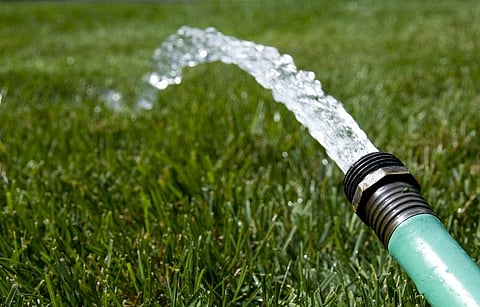Can agriculture fuel mass extinction?
Agriculture is not only writing the story of the destruction of human civilisation but also of living species. Recently, America’s well-known journalist and author Scott Cameron Pele presented a report based on the studies and thoughts of some scientists related to the sixth mass extinction of living species. The report placed agriculture at the centre of human activities, due to which an era of mass extinction has begun on our planet.
There have been five major mass extinctions of species in the history of our planet. During these events, some species were wiped out forever.
The fifth and by far the last mass extinction occurred about 66 million years ago when an asteroid annihilated the dinosaurs. Now, humanity is pushing plants and animals towards the sixth mass extinction. Current causes are pollution, destruction of natural habitats of organisms, over-exploitation of resources and climate change.
The current period, called the Anthropocene, is the time when human activities started to have a considerable influence on the planet’s climate and ecosystems. Agriculture and related activities have contributed their fair share to fuel it.
Gerardo Ceballos, a Mexican ecologist and one of the world’s leading scientists on mass extinctions, has collected information about how severe the process of extinction of organisms has become since the last century.
Only 2 per cent of the large fish that were in the oceans 50 years ago are left alive, Ceballos said.
We have lost about 70 per cent of all animals on the planet and 90 per cent of Southeast Asia’s tropical forests since 2000. This indicates that human influence is so widespread that the species is turning out to bd deadlier than the meteorite that wiped out Earth’s dinosaurs.
The difference between the previous five mass extinctions and the ongoing one is alarming. The former took millions of years to occur, but the current event is so rapid that it now takes only two or three decades.
Many species will not get enough time to overcome human-induced ecosystem changes. Even species not directly affected by the extinction threat will not get enough time to evolve and they will be caught in the vicious cycle of our activities.
Role of agriculture
Our planet is in the midst of its sixth mass extinction and habitats for Earth’s wildlife are being destroyed rapidly. About 50 per cent of the species on the planet will face extinction by the end of this century, scientists estimated.
Between 2018 and 2020, the wildlife population decreased to 68 per cent from 64 per cent. Rebecca Shaw, chief scientist and senior vice president of the World Wildlife Fund for Nature, expressed her concerns: “You wouldn’t expect to see such a huge decline in wildlife in two years,” she said.
Shaw considers agriculture to be the main reason behind the destruction of wildlife.
“The number one cause of extinction of species globally is the destruction of their original habitat and that destruction usually comes from the expansion of agricultural land,” she added.
Shaw cited examples of tropical rainforests being cleared for soybean and corn cultivation or cattle grazing.
Rainforests provide basic ecosystem functions such as stabilising the planet’s climate and weather patterns, providing roots, fruits and medicines and conserving fresh water. With rainforests being sacrificed at the altar of agriculture, the planet’s life is being deprived of these life-giving services.
Natural environments such as forests, where most of the fauna thrive, maintain ecological balance and regulate appropriate climate patterns, are all being lost to agricultural land.
Our Earth is a water planet, but the water available for drinking and other domestic purposes is only about 2.5 per cent of the planet’s total water. More than 70 per cent of this water is used for irrigation.
The food crops cultivated in modern agricultural systems are all highly water-intensive. While scrambling for irrigation, we have dried up rivers, canals, and groundwater resources.
Some water bodies turn green again during the rainy season, but the aquatic organisms would have died by then. Aquatic organisms are disappearing due to extensive irrigation and water pollution. And modern agriculture has a big hand in this process as well.
Chemical fertilisers, especially nitrogen and phosphorus, are used to increase the yield of crops. These residues get accumulated in the water bodies, paving the way for the proliferation of blue-green algae.
These algae cover the surface of the freshwater body, making it deficient in oxygen. Algal bloom releases toxins into the water and the environment of the reservoir becomes unfavourable for the aquatic organisms. Slowly the reservoirs also start drying up. This process is called eutrophication. Eutrophication enhances due to intensive applications of chemical fertilisers in agriculture.
It is clear that without changing our behaviour, the threat of species extinction will become irreversible. Biodiversity should flourish so that the planet remains ecologically stable and protected from ominous climate changes.
All our basic needs and conditions to remain alive depend on nature. If we exploit nature for our food and luxuries, disturb the climate and drive species to extinction, we will be endangering human life too.
We have to ensure that we are eating foods that are friendly to the planet and do not adversely affect its biodiversity. We must also urgently ensure that we do not waste food at all. Currently, 40 per cent of the total food goes waste. This means that nature has to bear a 40 per cent extra burden to produce that food.
Biodiversity conservation, environmental balance and long-term sustainable developments must be incorporated into agricultural policies and farming systems.
But since the present and future of humanity depend on agriculture, we cannot resort to a paradigm shift in agricultural policies in one stroke. We must make gradual changes and develop agriculture according to the principles of life on the planet.
Read more
Views expressed are the author’s own and don’t necessarily reflect those of Down To Earth


